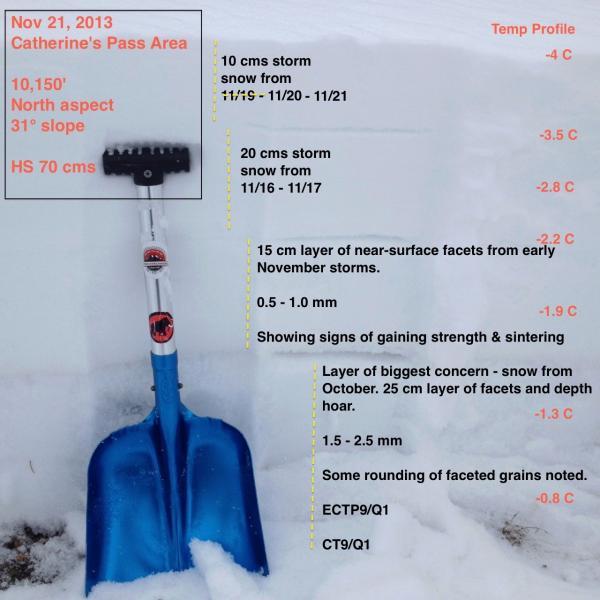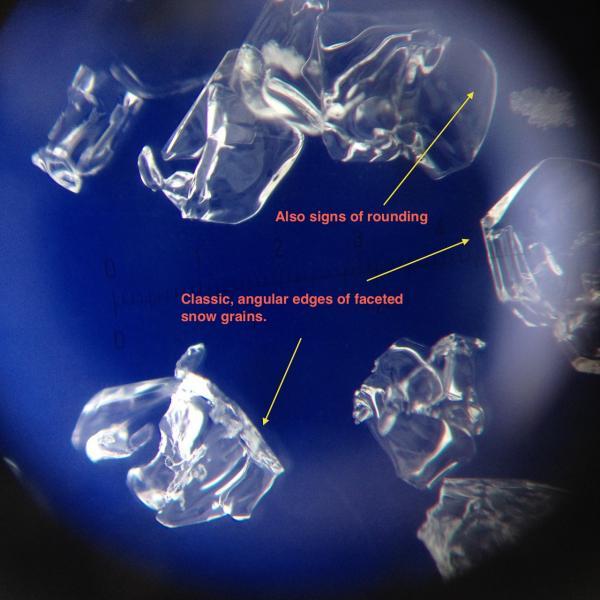Was interested in how the two weakest layers of our snowpack appeared. The layer of depth hoar and facets down at the ground interface, as well as the layer of near surface facets that formed from the early November period of high pressure and is buried 30-40 cms down from the snow surface. Overall the NSF layer appears to be strengthening and I could not get any failures or clean shears at this layer. From under a lens, the grains are about 0.5 - 1.0 mm with rounding and sintering noted. In a gloved hand, the layer of faceted snow and depth hoar at the ground is quite loose and sugary. Grain sizes are up to about 2.5 mm, but under a lens I noted that is some rounding occurring. Temperature profile showed no gradient in the snowpack. This past Sunday I was unable to isolate a column on this layer, and things today were a little better, but still poor test results - ECTP9/Q1 - failing in the depth hoar down near the ground. The take home point I came away with was this layer is still reactive, but it has adjusted to the load from the weekend and would probably only be reactive in wind loaded areas (for example) where there is more of a load on this weak layer.
Annotated photo of pit profile.

Photos of depth hoar and faceted grains near the ground. Lots of angular edges we see with facets, but also some rounding noted.







